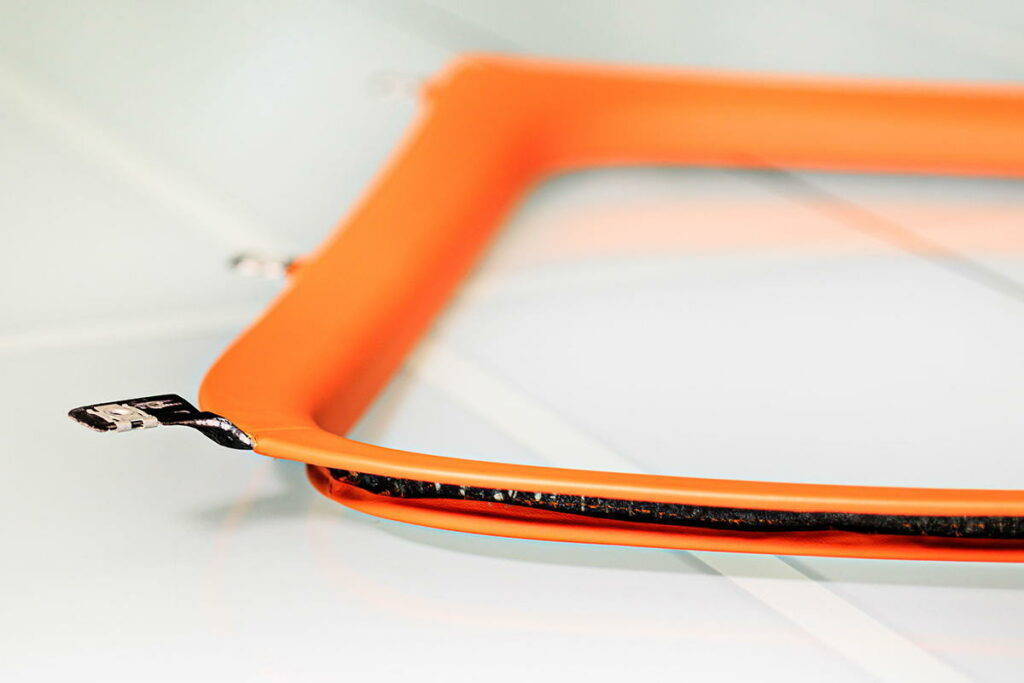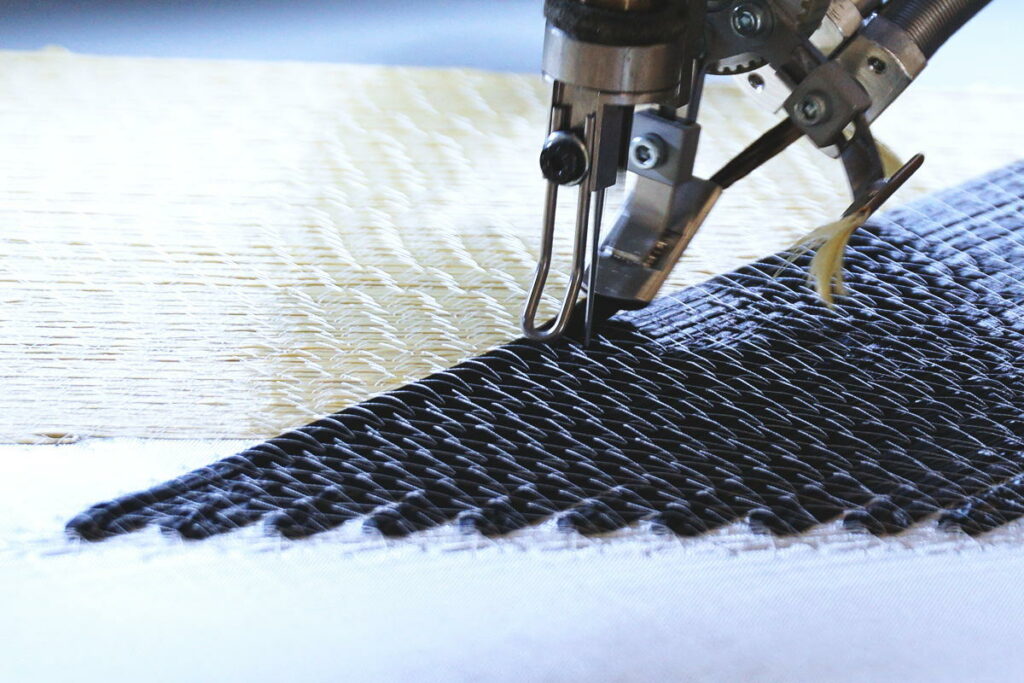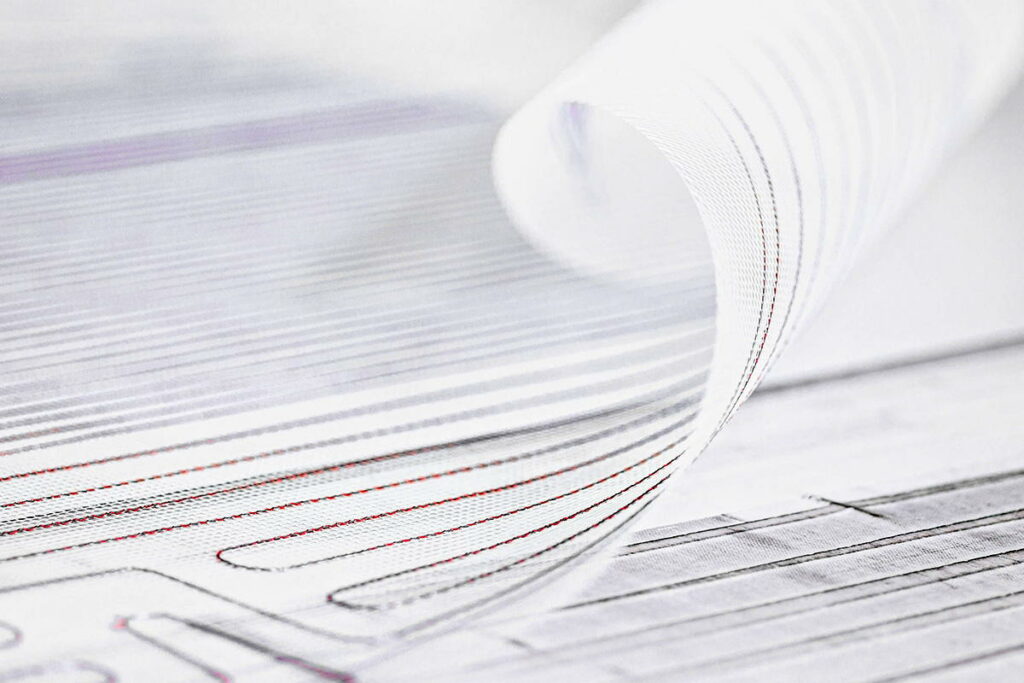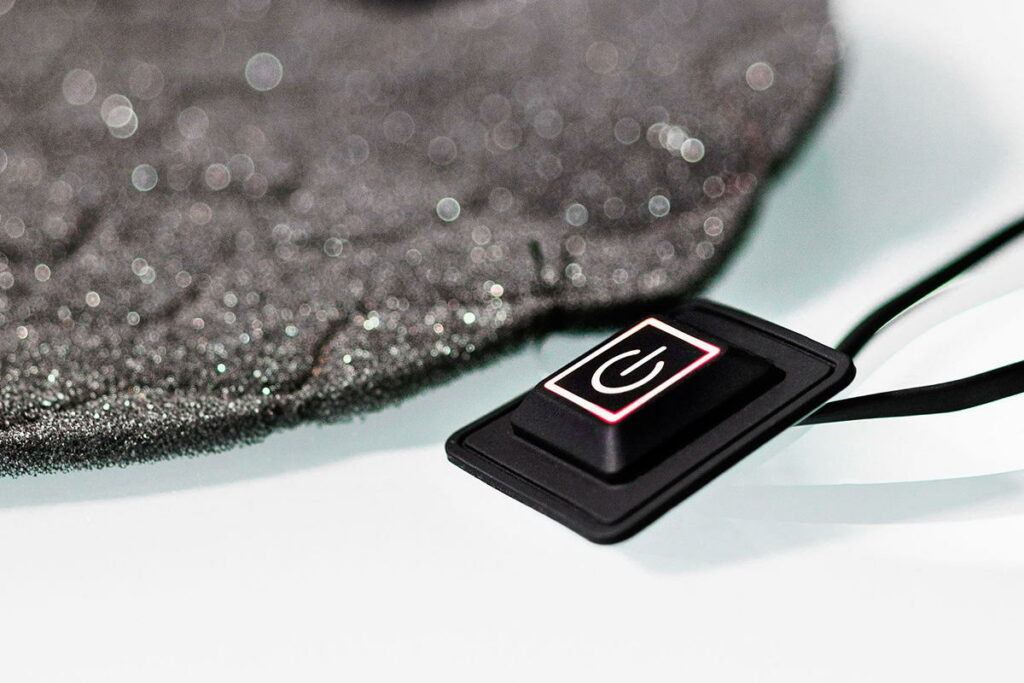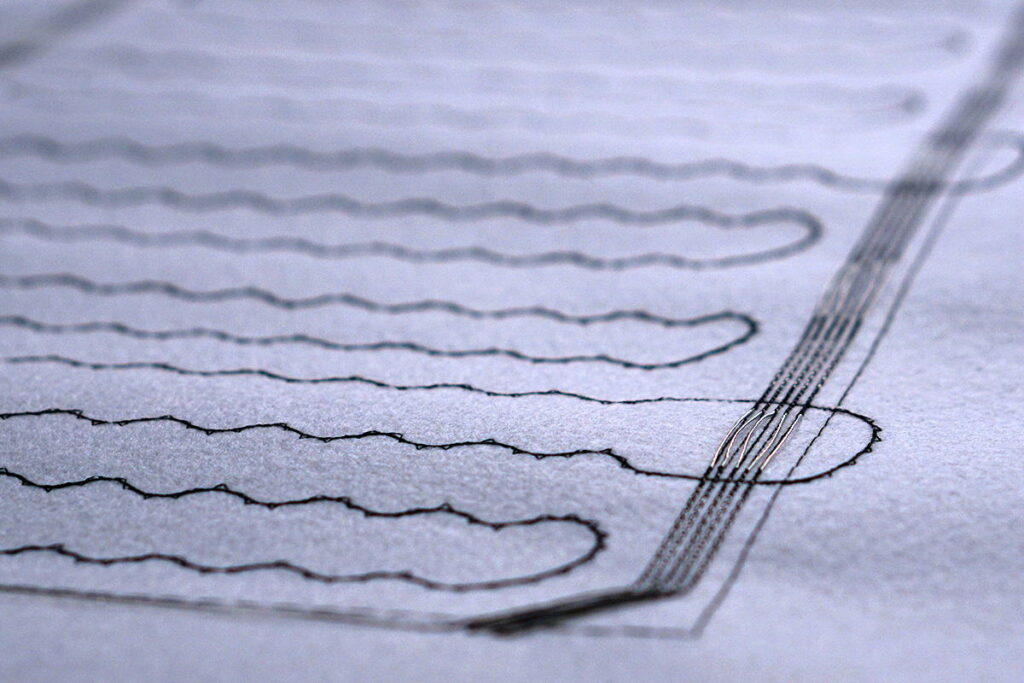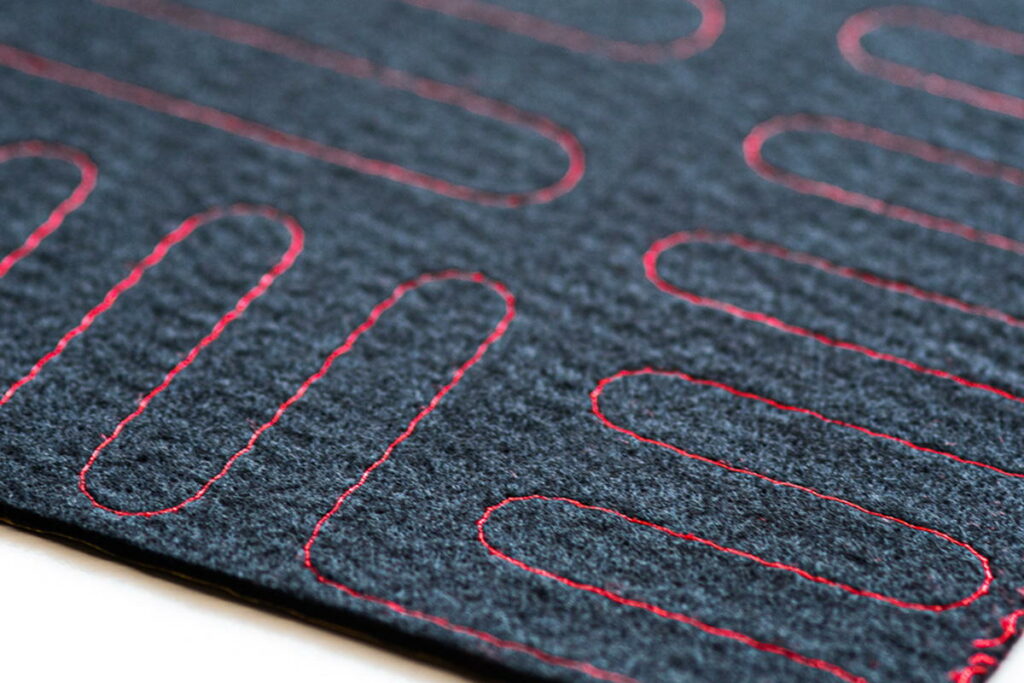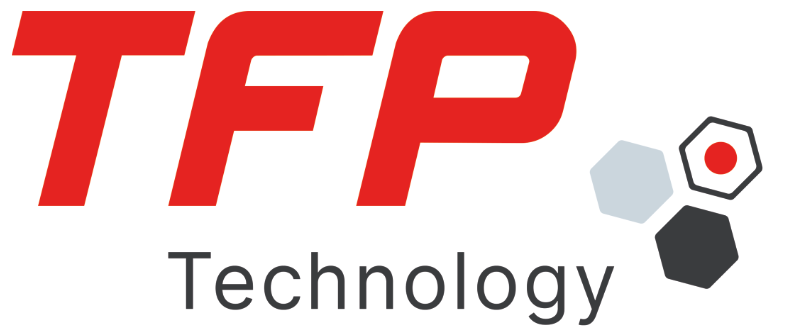Carbon preforms for carbon ship propellers
✓ Are you a manufacturer of ship propellers or boat propellers?
✓ Are you looking for lightweight, high-strength, corrosion-resistant carbon propellers with an optimized and complex design?
✓ Are you looking for a supplier or manufacturer of carbon fiber reinforced boat propellers which can develop complex geometries with you and produce them cost-effectively?
TFP Technology manufactures propeller preforms from carbon fibers for further processing into a ship’s propeller. We embroider carbon fibers in the optimal orientation and near-net-shape with complex geometries onto a suitable carrier material. You as the manufacturer (B2B market) process the carbon preform into the finished ship’s propeller.
Our carbon preforms are suitable for inboard and outboard engines – as hydro propellers and inline propellers / inline thrusters.
Cost-effective production of carbon propellers as preforms
Carbon propellers have a reputation for being more expensive than their counterparts made from traditional materials.
Our innovative embroidery technology offers decisive advantages and leads to a more cost-effective production of carbon propellers compared to conventional manufacturing processes:
- Preforming: With a carbon preform, you have precise control over the material and the shape. You benefit from consistent quality and less material waste.
- Reduced machining: With a preform in the basic shape of the ship's propeller, you save time and costs during post-processing.
- Optimized material usage: Embroidered preforms use the carbon fibres efficiently and minimize expensive material waste.
- Lightweight construction: The targeted use of material in critical areas reduces the weight of the propeller without compromising its strength.
- Flexible and complex geometries: We develop and manufacture preforms with complex and optimized geometries to suit your specific requirements and designs.
- Scalability and automation: We produce your preforms with high repeat accuracy in small to large series. You benefit from cost savings thanks to our scalable and automated production process using embroidery technology.
The production of carbon preforms for ship propellers is a promising alternative to conventional manufacturing methods. It has advantages in terms of cost, efficiency, flexibility and quality.
We develop the optimum carbon preform for your propeller.
Advantages of carbon propellers
Compared to conventional propeller materials, such as steel or aluminum, marine and boat propellers made of carbon offer several advantages:
- High rigidity: The high damping performance drastically reduces vibrations. At the same time, cavitation phenomena are suppressed.
- Low weight: The low weight not only simplifies the installation of the propeller blades. In addition, the performance of carbon propellers is not impaired.
- Lower moment of inertia: The shaft diameter is reduced due to a lower moment of inertia. At the same time, the load on the bearing is reduced.
- High efficiency: propellers made of carbon fibers increase energy efficiency and thus reduce fuel consumption.
- High robustness: Higher material fatigue resistance than conventional materials, which increases reliability and robustness against external influences. In addition, carbon propellers are highly resistant to corrosion, which reduces overall operating costs and increases the operating time of ships.
- Flexibility in design: The use of carbon fibers allows the preforms to be produced in complex shapes and profiles with precise reproducibility.
Areas of application for carbon propellers
- Merchant shipping: In merchant shipping, carbon propellers maximize fuel efficiency and reduce operating costs.
- Yacht building: In the field of yacht building, carbon propellers can be used for high-performance sailing boats and motor yachts.
In addition to the technical aspects, they offer aesthetic appeal for discerning yacht owners. - Marine research and exploration: Robust and lightweight propellers are an advantage for research vessels and underwater vehicles that are used in demanding environments such as deep sea or polar regions.
- Sport and racing boats: In the field of boat racing, carbon propellers are particularly interesting for maximum performance and speed. The lightness and stiffness of carbon help to improve the maneuverability and responsiveness of the boats.
- Other areas: Whether e-surfboards, jet skis or diving scooters; the areas of application are diverse.
TFP Technology is your partner for the production of propeller preforms made of carbon fibers for further processing into a ship’s propeller.
We embroider carbon fibers in the optimum orientation and near-net-shape with complex geometries onto a suitable carrier material. They process the carbon preform into the finished ship’s propeller.
Read on and find out more about:
- Fiber preforms
- Reinforcement structures
- Further processing using thermosetting processes
- Technology
Further contributions

Electric heat mats for seat heating in commercial vehicles
✓ Are you a manufacturer of commercial vehicles or a supplier for seats in the commercial vehicle industry?
✓ Do you need robust and reliable seat heaters that can be flexibly adapted to your seat configurations – in small or medium quantities from 500 to 2000 units?
✓ Are you looking for a ready-to-plug-in, cost-effective solution with minimal installation effort?
Then read on!

Cost-effective heat mats for mattress heating in series production
✓ Are you a manufacturer of heated underblankets and other heating solutions for mattresses?
✓ Do you need reliable and robust heat output with minimal energy consumption?
✓ Are you looking for a cost-effective alternative for your mattress heat mats?
Then read on!

Electric heat mats for fans in heat pumps as an alternative to silicone heat mats
✓ Are you a manufacturer of fan components or fans for heat pumps?
✓ Are you faced with the challenge of keeping your fans or ventilators ice-free (anti-icing)?
✓ Are you looking for a cost-effective alternative to the silicone heat mat you have been using up to now?
Then read on!

